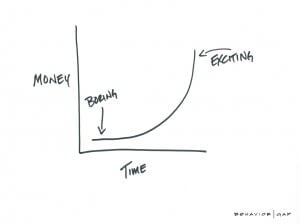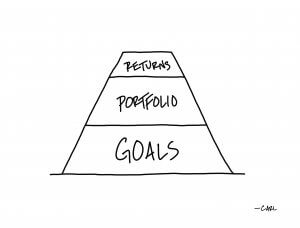
Dollar Cost Averaging
Investment ManagementBy: Jude McDonough, CFP® AIF®
Mar 26, 2020
If you participate in a workplace retirement plan, then you are utilizing Dollar Cost Averaging. Many people have heard the term, but most aren’t completely sure of the definition. The purpose of this post will be to explain what it is and how it can be beneficial to you in down markets.
The simplest way to define it is that you are purchasing a security (or securities) systematically in dollar denominated intervals over a period of time. In the case of a 401k, the time period is indefinite as you will hopefully continue to do it as long as you are employed and participating in the workplace retirement plan. Another way one may utilize Dollar Cost Averaging is if you want to invest a sum of money over a period of time rather than adding it all at once. For example, if you find yourself with a new sum of money and aren’t comfortable adding it all to the market at once, you may employ this strategy. You can divide the money by 6 and agree to invest the amount on the 15th of every month for the next 6 months whether the investment is up or down.
Why would you do that rather than put it all in at once? Well, there could be a number of reasons, but the most common reason would be to spread out your risk of entering the market. Let’s keep the example simple and forecast the next 6 months of a purchase. Furthermore, we’ll assume you have $60K and you are investing $10k per month. Below is a table highlighting the investments:
| Investment Installment | Amount Invested | Cost Per Share | Shares Purchased |
| 1 | $10,000.00 | $10.00 | 1000.00 |
| 2 | $10,000.00 | $10.50 | 952.38 |
| 3 | $10,000.00 | $9.75 | 1025.64 |
| 4 | $10,000.00 | $8.50 | 1176.47 |
| 5 | $10,000.00 | $7.75 | 1290.32 |
| 6 | $10,000.00 | $9.50 | 1052.63 |
| Total Shares | 6497.45 | ||
| Total Invested | $60,000.00 | ||
| Average Cost | $9.23 |
This is an example of how Dollar Cost Averaging can work in your favor. As you see, the share price went down and you were able to get more shares in months 3, 4, 5 and 6 vs. months 1 and 2. Furthermore, if you multiply your 6497.45 shares by the final price of $9.50, your investment is worth $61,726. If you just purchased it all at the beginning, you would have 6000 shares worth $57,000. Therefore, Dollar Cost Averaging saved you $4726.
It can work both ways though. Let’s look at an example where the investment goes up for the 6 months:
| Investment Installment | Amount Invested | Cost Per Share | Shares Purchased |
| 1 | $10,000.00 | $10.00 | 1000.00 |
| 2 | $10,000.00 | $10.50 | 952.38 |
| 3 | $10,000.00 | $10.25 | 975.61 |
| 4 | $10,000.00 | $10.50 | 952.38 |
| 5 | $10,000.00 | $10.75 | 930.23 |
| 6 | $10,000.00 | $11.25 | 888.89 |
| Total Shares | 5699.49 | ||
| Total Invested | $60,000.00 | ||
| Average Cost | $10.53 |
In this case, with the rise in share prices every month, you were getting less shares in your installments. You ended with 5699.49 shares that were worth $64,119. If you just purchased it all at the beginning, you would have 6000 shares worth $67,500. In this case, the Dollar Cost Averaging cost you $3381. As you can see, it can work in or out of your favor, but it is a good way to invest. It really depends on your situation and your sentiment towards the market at the time. If you are nervous, it is a really nice way to ease in. You just have to understand that you will make less money if the investment goes up over the time period. Unfortunately, you won’t know the outcome until after the money is invested. Finally, if you’re investing in a 401k plan, it is a great practice to increase your contributions in down markets to take advantage of the lower share prices.
The content is developed from sources believed to be providing accurate information. The information in this material is not intended as tax or legal advice. It may not be used for the purpose of avoiding any federal tax penalties. Please consult legal or tax professionals for specific information regarding your individual situation. The opinions expressed and material provided are for general information.
The views and opinions expressed herein are those of the speaker or writer and do not necessarily reflect the views of Alliance Wealth Advisors, LLC. All opinions are subject to change without notice. Neither the information provided nor any opinion expressed constitutes a solicitation for the purchase or sale of any security. Past performance is no guarantee of future results. Diversification does not guarantee a profit or protect against loss in a declining financial market. All indices are unmanaged and may not be invested into directly.


